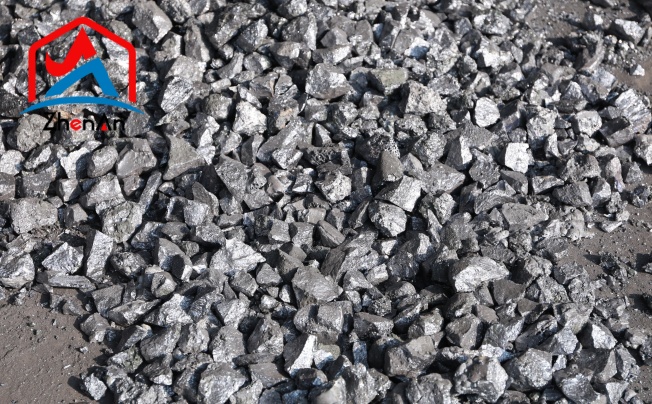Silicon metal, a lustrous and versatile element, is vital in the realm of industrial materials. Recognized for its exceptional properties, it serves as the building block for a myriad of products that shape our modern world.
Silicon Metal Deposits
China
China has long been recognized as a powerhouse in silicon metal production, boasting a robust mining sector that taps into extensive reserves spread across different regions. Key production centers in China include Xining in Qinghai Province and Leshan in Sichuan Province. These areas are known for their high-quality silica deposits and efficient extraction methods, enabling China to maintain its competitive edge in the global silicon metal market.
Russia
Russia's silicon metal industry thrives primarily in regions such as Kemerovo Oblast and Irkutsk Oblast, where rich mineral deposits fuel the country's production output. With a strong emphasis on technological innovation and sustainable mining practices, Russia has emerged as a key player in the international silicon metal arena.
Norway
Norway may not be as prominent on the global stage compared to China and Russia, but it boasts its own unique contributions to the silicon metal market. Norway's focus on environmental stewardship and responsible mining practices underscores its commitment to sustainability in an industry often plagued by environmental concerns.
United States
In the United States, states like Washington and California host significant silicon metal mining operations that cater to both domestic demand and international markets. Silicon Valley may be renowned for tech innovation, but these states also contribute significantly to global supply chains for essential materials like silicon metal.
Exploration and Site Selection
Embarking on the journey of silicon metal mining begins with a meticulous process of exploration and site selection. Geologists, using specialized tools and techniques, survey potential areas rich in silicon deposits. This phase involves analyzing geological maps, conducting aerial surveys, and collecting rock samples for testing.
Factors such as mineral composition, proximity to infrastructure, and environmental impact are carefully considered during this stage. The goal is to identify sites with the highest concentration of silicon reserves while minimizing ecological disturbance.
Once promising locations are identified through exploration, the site selection process commences. Environmental impact assessments are conducted to evaluate the potential consequences of mining activities on local ecosystems and communities.
Stakeholder consultations play a crucial role in ensuring transparency and addressing concerns related to land use rights and cultural heritage preservation. Additionally, logistical considerations such as access to water sources, transportation networks, and power supply are taken into account when finalizing the chosen mining site.
Extraction Methods
In the realm of silicon metal mining, extraction methods play a pivotal role in obtaining the valuable resource from beneath the Earth's surface. Two primary techniques employed in this process are open-pit mining and underground mining. Open-pit mining involves removing overlying soil and rock layers to expose the silicon deposits below.
Heavy machinery such as excavators and dump trucks are used to extract ore efficiently from large open pits. This method is commonly utilized when silicon deposits are closer to the surface.
Conversely, underground mining is employed when silicon deposits lie deep underground beyond the reach of open-pit operations. Miners tunnel into the earth using shafts or adits to access these deeper reserves.
The intricate network of tunnels allows for the systematic extraction of silicon ore while providing structural support to prevent cave-ins. Underground mining requires specialized equipment and stringent safety protocols due to potential hazards associated with working in confined spaces at significant depths.
Processing and Refining Techniques
Following extraction, raw silicon ore undergoes a series of processing steps before transforming into high-quality silicon metal ready for industrial applications. The initial phase involves crushing and grinding the ore into fine particles to enhance its surface area for subsequent chemical reactions during processing.
Once reduced in size, purification methods such as froth flotation or magnetic separation may be employed to separate silicon minerals from impurities. Refining techniques play a crucial role in achieving desired purity levels in extracted silicon metal.
Through processes like smelting or chemical leaching, impurities like iron oxides or aluminum compounds are removed from the ore concentrate. Silicon ingots are then produced through further refining processes involving melting down purified material at high temperatures within specialized furnaces under controlled atmospheres.
The Environmental Impact: Balancing Progress with Preservation
Silicon metal mining operations can have adverse environmental impacts that must be mitigated through sustainable practices. Deforestation and habitat destruction are common outcomes due to land clearing for mine sites; however, reclamation efforts aim to restore ecosystems post-mining activity. Water pollution from runoff containing chemicals used in extraction processes poses risks to aquatic life but can be minimized through water recycling systems implemented by responsible mining companies.
Embracing Sustainable Practices: A Path Towards Green Mining
The future of silicon metal mining lies in embracing sustainability through reclamation efforts and renewable energy sources adoption on sites globally. Integrating renewable energy like solar or wind power into mining operations can reduce carbon emissions significantly while enhancing operational efficiency. Furthermore, implementing water recycling systems not only conserves this vital resource but also reduces environmental impact by minimizing water usage during extraction processes.
Celebrating Innovation: The Bright Future of Silicon Metal Mining
As technology evolves alongside growing environmental consciousness within the industry itself - there is hope for more efficient extraction methods that minimize ecological footprint while maximizing output yield sustainably.






